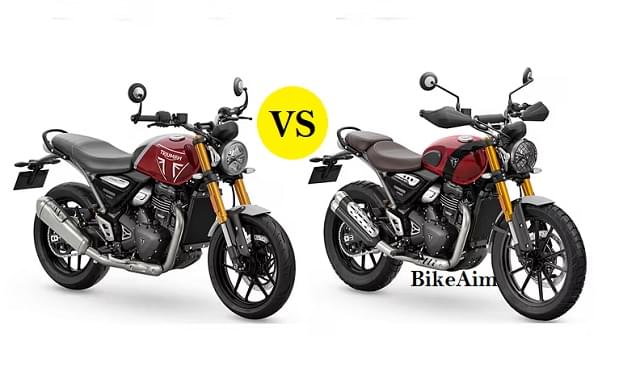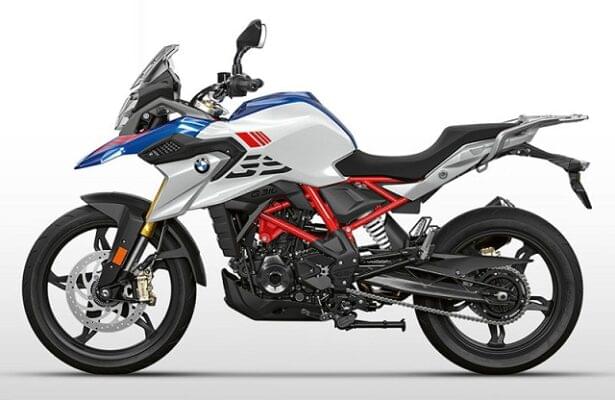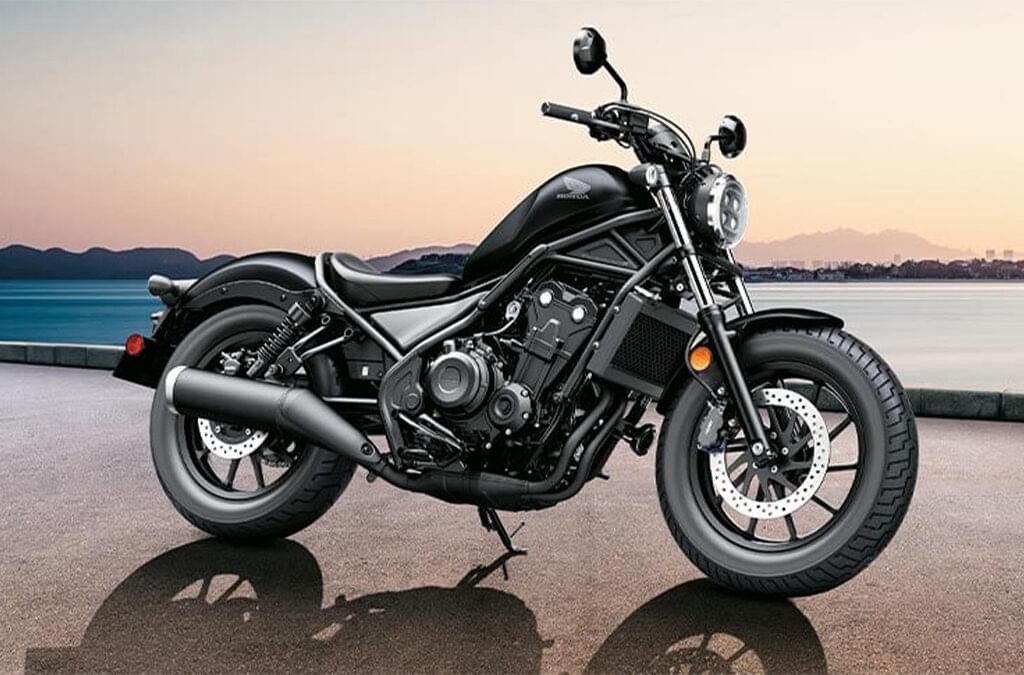Choosing between the Triumph Speed 400 and Triumph Scrambler 400 X for 2025 is no easy task. Both motorcycles, part of Triumph’s modern classic lineup, blend style, performance, and affordability, making them standout options in the middleweight segment. Whether you’re a new rider or a seasoned enthusiast, this detailed comparison of the Triumph Speed 400 vs Triumph Scrambler 400 X will help you decide which bike suits your riding style. We’ll explore their design, performance, features, and real-world experiences to provide a clear picture.
On‑Road Price & Ownership Costs
| Model | Ex‑Showroom (Delhi) | On‑Road (Delhi) | Warranty |
|---|---|---|---|
| Triumph Speed 400 | ₹ 2.46 Lakh | ₹ 2.80 – 2.85 Lakh | 2‑year unlimited |
| Triumph Scrambler 400 X | ₹ 2.67 Lakh | ₹ 3.05 – 3.10 Lakh | 2‑year unlimited |
While the Speed 400 is more accessible upfront, the Scrambler 400 X commands a modest premium for its extra hardware. Insurance, registration, and road tax roughly add ₹ 35,000 to the true delta lies in accessory packs: skid plates, luggage racks, and handlebar risers for the Scrambler can push costs marginally higher.
Specification Comparison
| Specification | Triumph Speed 400 | Triumph Scrambler 400 X |
|---|---|---|
| Engine | 398.15 cc liquid‑cooled | 398.15 cc liquid‑cooled |
| Max Power | 40 PS @ 8,000 rpm | 39.5 bhp @ 8,000 rpm |
| Max Torque | 37.5 Nm @ 6,500 rpm | 37.5 Nm @ 6,500 rpm |
| Claimed Mileage | 30 kmpl | 28.3 kmpl |
| Top Speed | 145 kmph | 160 kmph |
| Fuel Tank Capacity | 13 L | 13 L |
| Kerb Weight | 176 kg | 185 kg |
| Brakes & Safety | Dual‑channel ABS, traction control | Dual‑channel ABS, traction control |
| Price (Ex‑Showroom Delhi) | ₹ 2.46 Lakh | ₹ 2.67 Lakh |
Engine Performance & Mileage
Triumph Speed 400
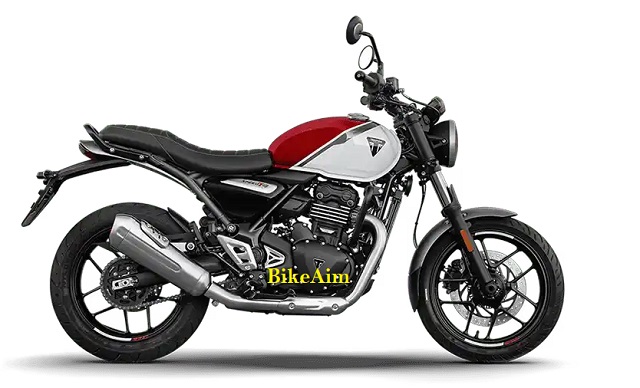
The Speed 400’s liquid‑cooled, 398.15 cc single‑cylinder mill puts out a sprightly 40 PS and 37.5 Nm, making highway overtakes effortless. In urban conditions, riders report a real-world mileage of around 28–30 kmpl, thanks to its refined fuel-injection system and efficient combustion chamber design. The 145 kmph top speed means you’re never outpaced on open stretches, and with smooth throttle response, it feels eager from city crawling to expressway runs.
Triumph Scrambler 400 X
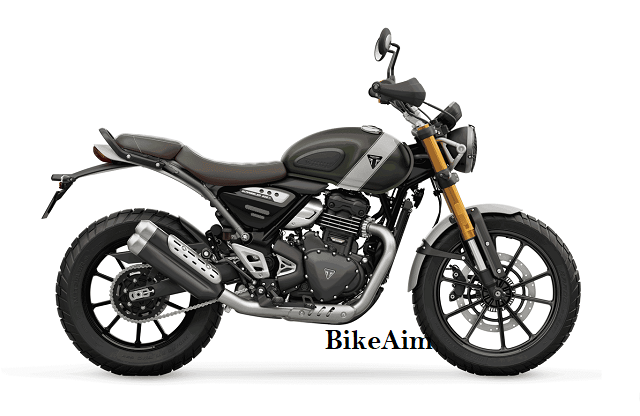
Under the Scrambler 400 X’s classic tank lies the same potent TR‑series engine, slightly detuned to 39.5 bhp for tractable midrange pull, yet still generating 37.5 Nm of torque. Its off‑road gearing and longer suspension travel mean you trade a few kmph of top‑end for stronger grunt below 6,000 rpm, ideal for gravel sector launches. Fuel efficiency sits around 26–28 kmpl, translating to a riding range of over 330 km per tank, a boon for weekend explorers
Design, Ergonomics & Features
1. Styling & Presence
- Speed 400 embraces a minimalist roadster aesthetic: a sculpted teardrop tank, circular headlamp with LED DRL, and a brushed‑aluminum seat cowl. It feels lean and purposeful on pavement.
- Scrambler 400 X layers on off‑road cues: high‑mount exhaust, aluminum bash plate, spoked wheels wrapped in dual‑purpose tyres, and an upswept tail section. Its upright stance commands respect both on asphalt and trails.
2. Ergonomics
- The Speed’s 790 mm seat height and slightly rear‑set footpegs create a sporty tuck while remaining accessible to riders of varying heights.
- The Scrambler’s 810 mm saddle and wide, swept bars offer a commanding posture perfect for all‑day comfort over mixed terrains.
3. Tech & Gadgets
Both bikes come equipped with:
- Dual‑channel ABS and switchable traction control
- Ride‑by‑wire throttle, torque‑assist clutch, and adjustable levers.
- A blend of an analogue tachometer and a digital LCD cluster for essential readouts
- USB charging port and optional smartphone connectivity on higher trims
4. Chassis and Suspension
The chassis and suspension setups reflect the bikes’ intended purposes.
- Triumph Speed 400: Features a hybrid spine/perimeter, tubular steel frame with a bolt-on rear subframe, designed for agile road handling. Its 43mm upside-down Big Piston forks offer 130mm of front travel, and the rear gas monoshock provides 120mm of travel with pre-load adjustment. This setup ensures a balance of comfort and sportiness on paved roads.
- Triumph Scrambler 400 X: Uses a tubular steel frame, better suited for off-road stability. Its 43mm upside-down Big Piston forks have 150mm of front travel, and the rear gas monoshock offers 150mm of travel, also with pre-load adjustment. The extra travel makes it more capable on rough roads and light trails. Owners praise its plush suspension, especially on potholed roads.
Key Difference: The Triumph Speed 400 is tuned for road agility, while the Triumph Scrambler 400 X excels in absorbing bumps on varied surfaces.
5. Brakes and Tyres
Braking and tyre choices further differentiate these bikes.
- Brakes:
- Triumph Speed 400: Equipped with a 300mm front disc and a 230mm rear disc, both with dual-channel ABS. The brakes are responsive and well-suited for urban and highway riding.
- Triumph Scrambler 400 X: Features a larger 320mm front disc and a 230mm rear disc with dual-channel ABS. The larger front disc provides better stopping power, especially when loaded or off-road. Some owners note the brakes feel spongy initially but improve with use.
- Tyres:
- Triumph Speed 400: Fitted with 110/80 R17 front and 150/70 R17 rear tyres, optimized for road grip and handling.
- Triumph Scrambler 400 X: Comes with 100/90-19 front and 140/80-17 rear tyres, designed for both on-road and light off-road use. Owners report good grip in dry conditions but express concerns about wet performance, with plans to switch to road-biased tyres later.
Key Difference: The Triumph Scrambler 400 X has a slight edge in braking due to its larger front disc, while the Triumph Speed 400 offers superior road grip.
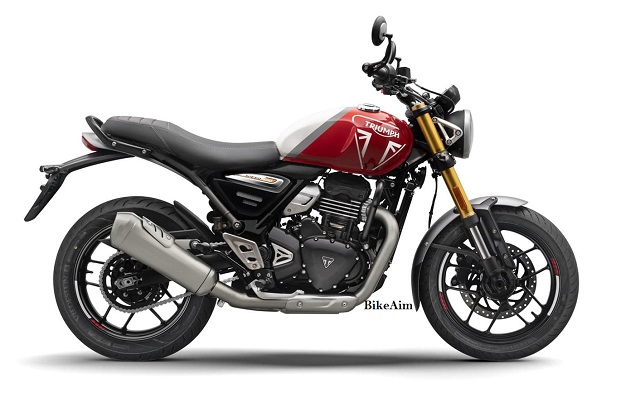
6. Weight and Dimensions
The dimensions of these bikes impact their usability and rider comfort.
| Specification | Triumph Speed 400 | Triumph Scrambler 400 X | Difference |
|---|---|---|---|
| Wet Weight | 179 kg | 185 kg | Scrambler 6 kg heavier |
| Seat Height | 803 mm | 835 mm | Scrambler 32 mm taller |
| Wheelbase | 1386 mm | 1418 mm | Scrambler 32 mm longer |
| Handlebar Width | 829 mm | 901 mm | Scrambler 72 mm wider |
| Height (Without Mirror) | 1096 mm | 1169 mm | Scrambler 73 mm taller |
| Tank Capacity | 13 L | 13 L | No difference |
- Triumph Speed 400: Its lower seat height (803 mm) and narrower handlebars (829 mm) make it more accessible for shorter riders and easier to maneuver in traffic. The shorter wheelbase (1386 mm) enhances agility.
- Triumph Scrambler 400 X: The taller seat height (835 mm) and wider handlebars (901 mm) provide a commanding riding position, ideal for long rides or off-road trails. The longer wheelbase (1418 mm) adds stability. Owners note that the Scrambler’s larger turning radius can be cumbersome in tight spaces.
Key Difference: The Triumph Speed 400 is better for shorter riders and urban environments, while the Triumph Scrambler 400 X offers a more stable, upright ride.
Key Insights & Buying Guide
- Urban Commuter vs Adventure Seeker:
- Choose Speed 400 if your daily rides are pavement‑bound, prioritising agile handling and a retro‑roadster look.
- Opt for the Scrambler 400 X if you crave weekend off‑road forays alongside your city commute.
- Cost of Ownership:
- Maintenance intervals, fuel efficiency, and insurance remain similar; the Scrambler’s accessory options may tip the balance in long‑term costs.
- Resale Value:
- Street‑styled 400s often hold appeal among café‑racers and custom builders, while scramblers enjoy a dedicated adventure community, and both enjoy strong demand.
- Visual Identity:
- The Speed’s contemporary lines complement urban streetwear culture; the Scrambler’s rugged stance stands out in a crowd.
Real‑World Riding Experience
Street Performance: Speed 400
Riding the Speed 400 through city traffic reveals its lightweight chassis and quick steering. The engine’s responsive midband makes stop‑start riding a breeze, while the dual‑channel ABS inspires confidence under hard braking. Long‑distance runs are comfortable, though the lack of wind protection can make highway blasts slightly tiring at sustained triple‑digit speeds.
Off‑Road Prowess: Scrambler 400 X
Take the Scrambler off the beaten path, and its 190 mm ground clearance, long‑travel suspension, and spoked wheels soak up ruts and loose gravel with poise. The torque‑assist clutch smooths out low‑speed maneuvers, and the bark of the high‑mounted exhaust adds a rally‑born soundtrack to your adventure.
Conclusion: Which Bike Is Right for You?
The Triumph Speed 400 and Triumph Scrambler 400 X are both exceptional motorcycles, but they cater to different riders:
- Choose the Triumph Speed 400 if:
- You prioritize agile handling for city and highway riding.
- You want a lower seat height (803 mm) for easier maneuverability.
- You’re looking for the best value at Rs 2.46 lakh.
- Choose the Triumph Scrambler 400 X if:
- You want versatility for both on-road and light off-road adventures.
- You prefer a commanding, upright riding position.
- You’re willing to pay Rs 2,67 Lakh for added ruggedness.
Both bikes deliver Triumph’s renowned build quality and performance, making them excellent choices for both new and experienced riders. Test ride both to see which one sparks joy for you!
Call‑to‑Action
Which 400cc Triumph speaks to you? Share your thoughts in the comments below, and don’t forget to explore our detailed reviews of the Triumph Speed 400 and Triumph Scrambler 400 X for even deeper insights. Hit Subscribe to stay updated on the latest two‑wheeler launches and comparisons!
- Subscribe to get more in-depth articles about motorcycle reviews, maintenance tips, and tour itineraries.
- Explore Related Content: Check out our detailed Yezdi Adventure vs Himalayan 450 – 2025 post for performance-oriented options.
- Join Our Community: Follow us on Facebook, Telegram, Instagram, and Twitter for real-time updates and rider meetups.
Do both bikes have the same engine?
Yes, both feature a 398.15 cc, liquid-cooled, single-cylinder engine producing 39.5 bhp and 37.5 Nm.
Which bike is better for off-road riding?
The Triumph Scrambler 400 X is better for off-road use due to its longer suspension travel, higher ground clearance, and off-road tyres.
Which bike is better for beginners?
The Triumph Speed 400 is more beginner-friendly due to its lower seat height and agile handling.
Which bike has a higher top speed?
The Scrambler 400 X tops out at 160 kmph, slightly above the Speed 400’s 145 kmph, thanks to its gearing.
